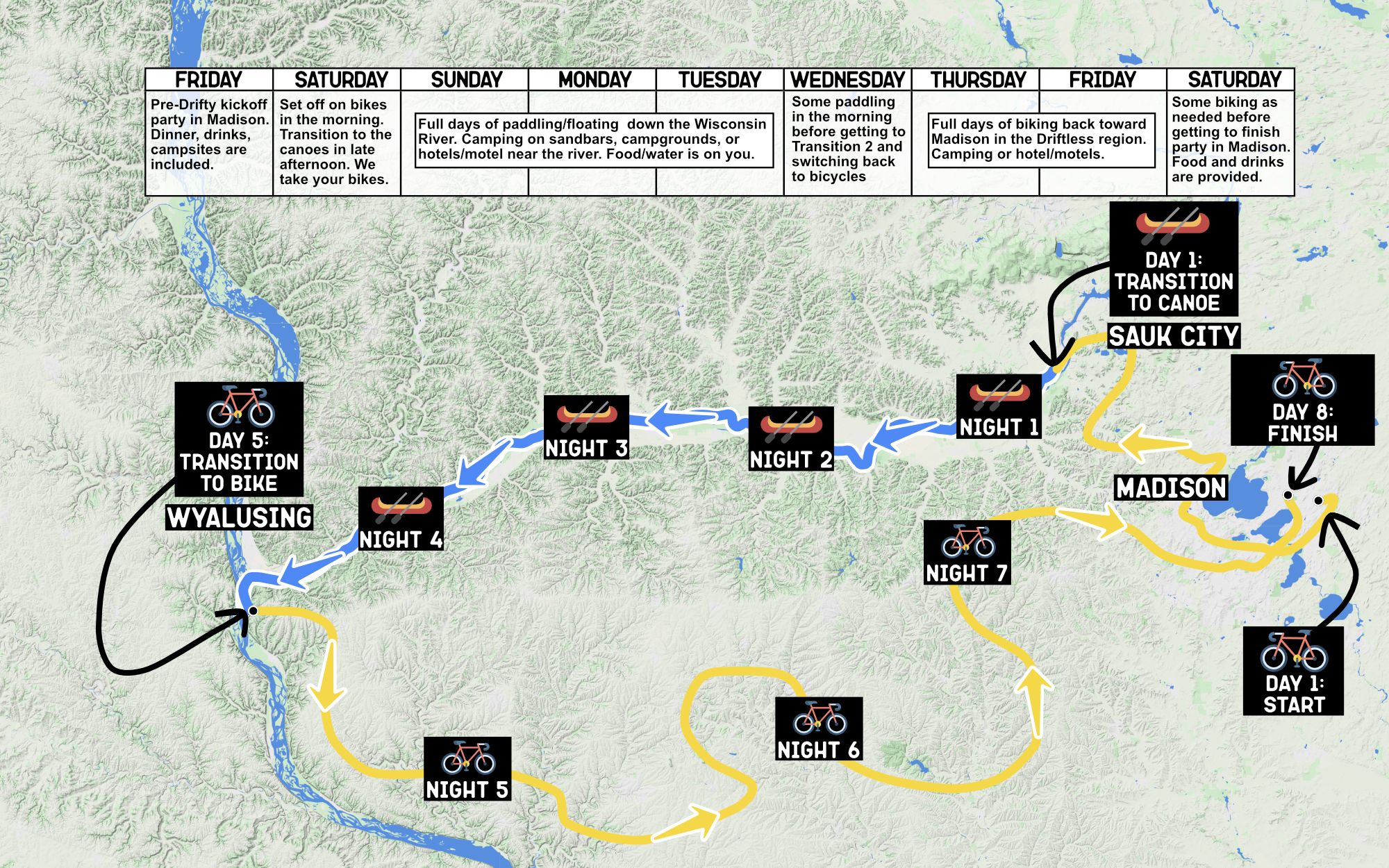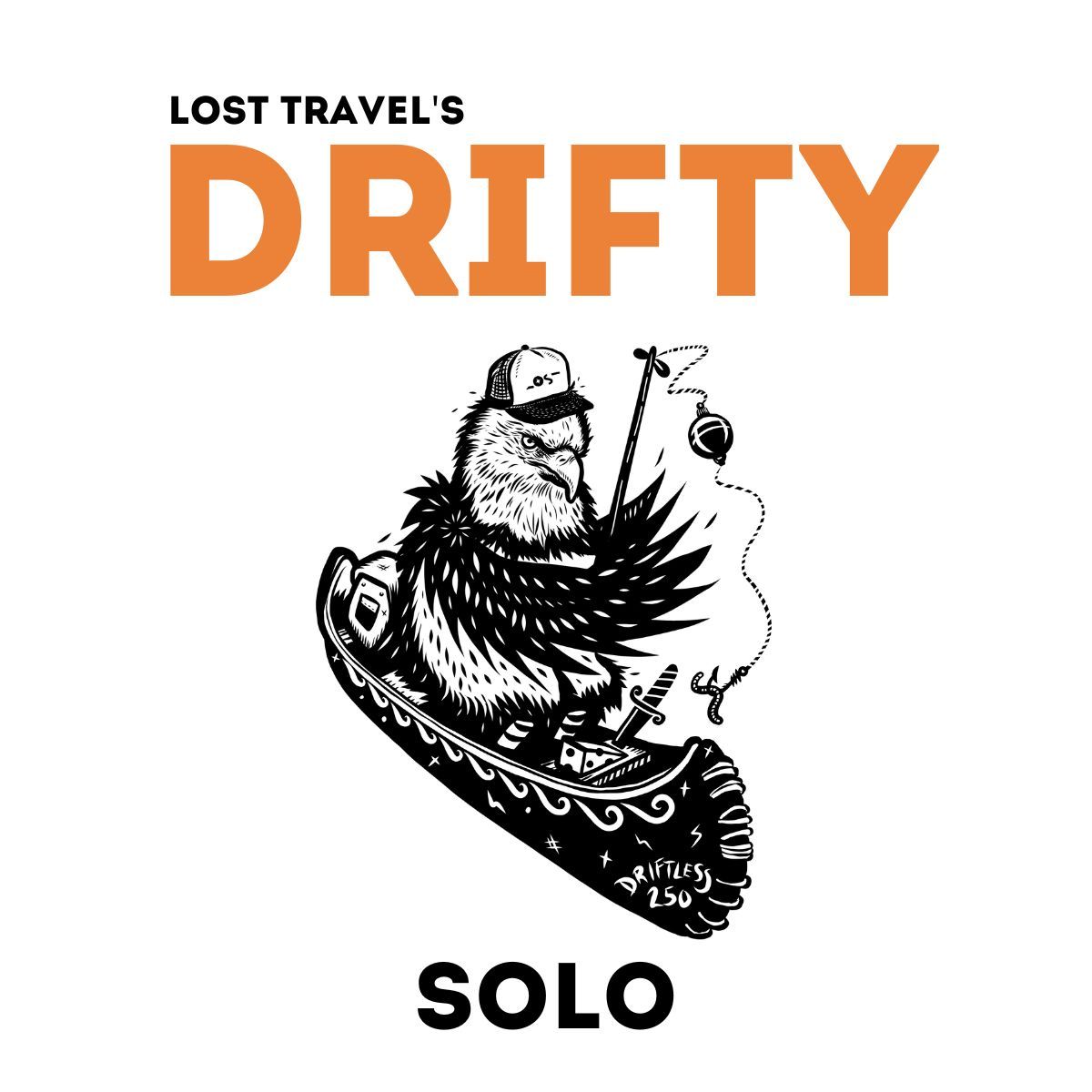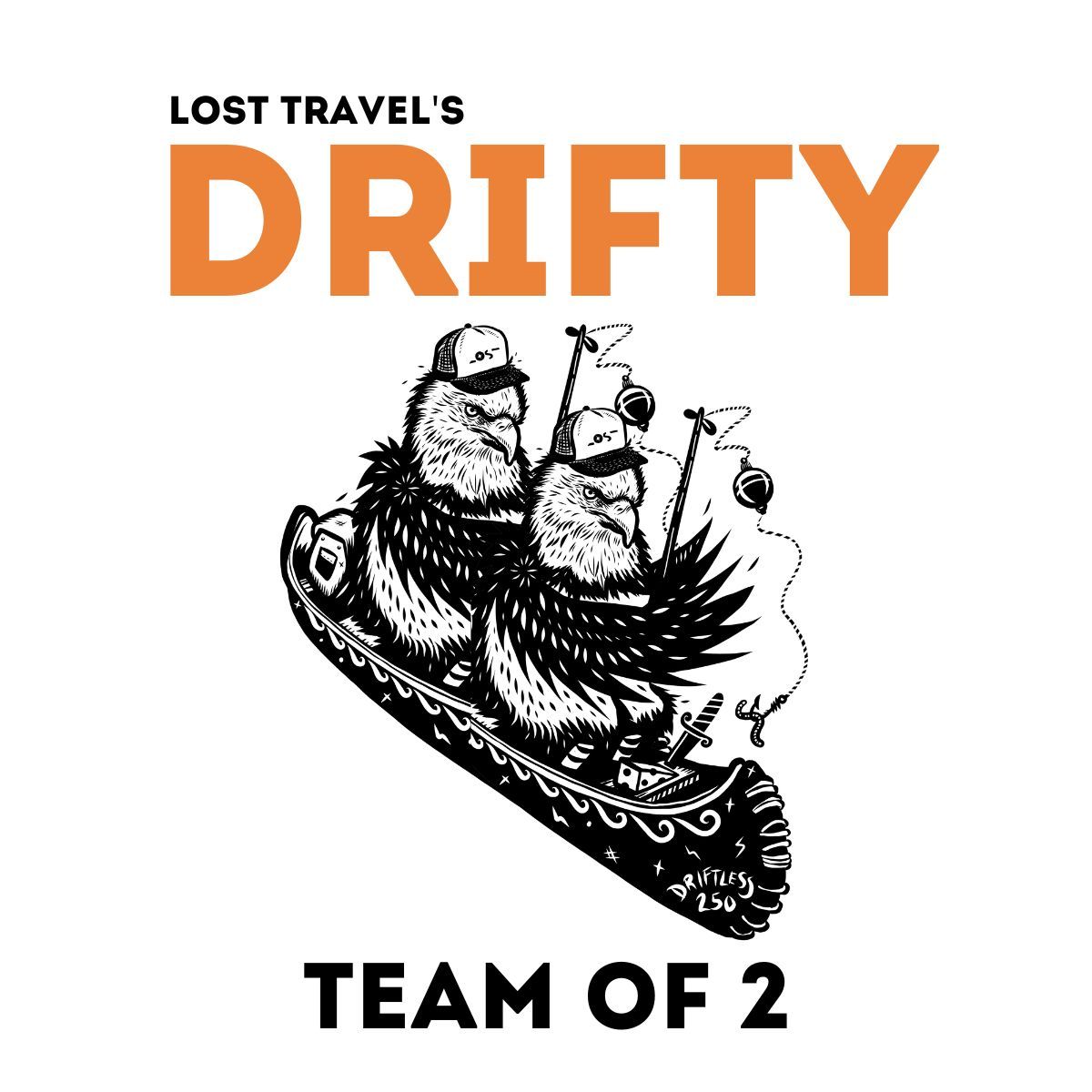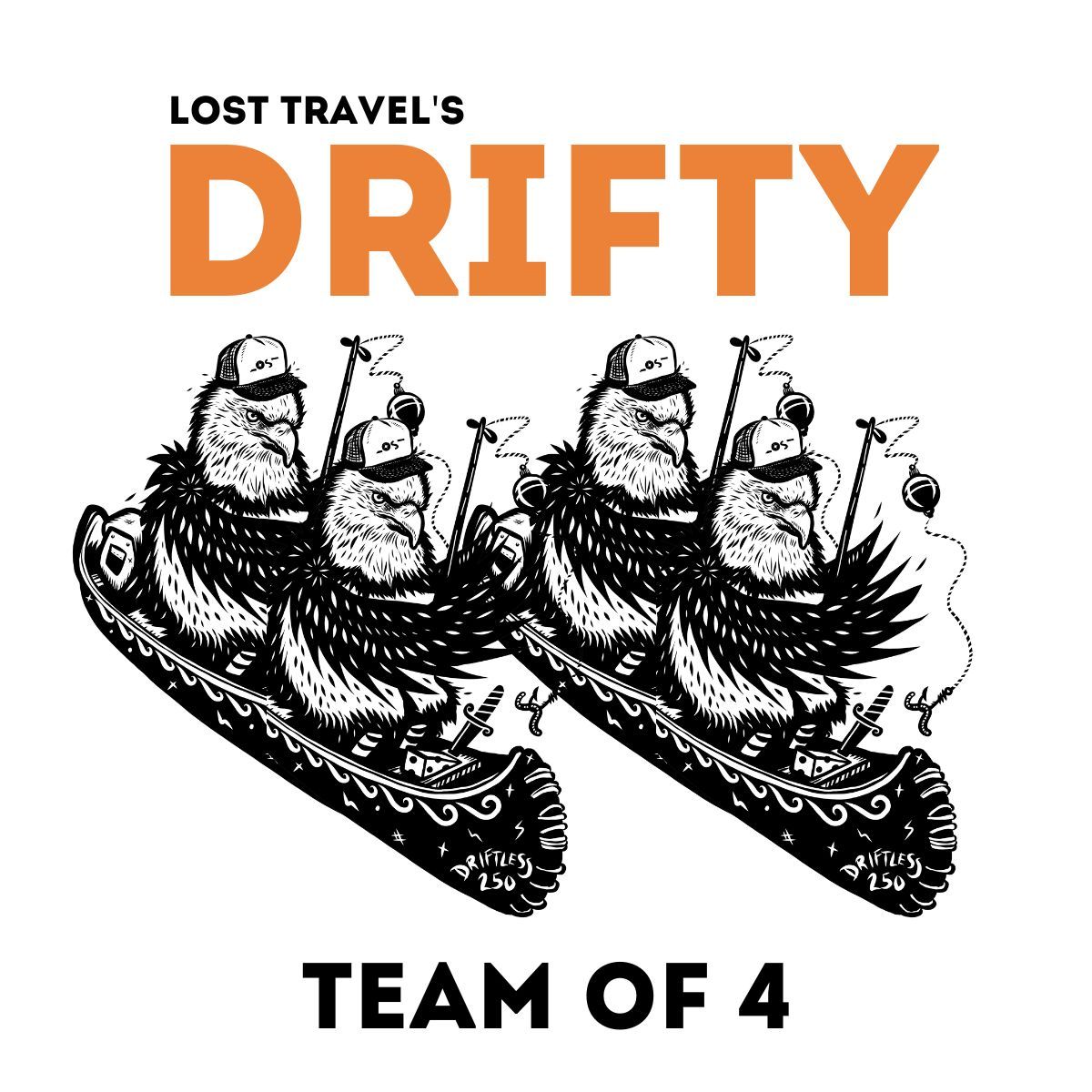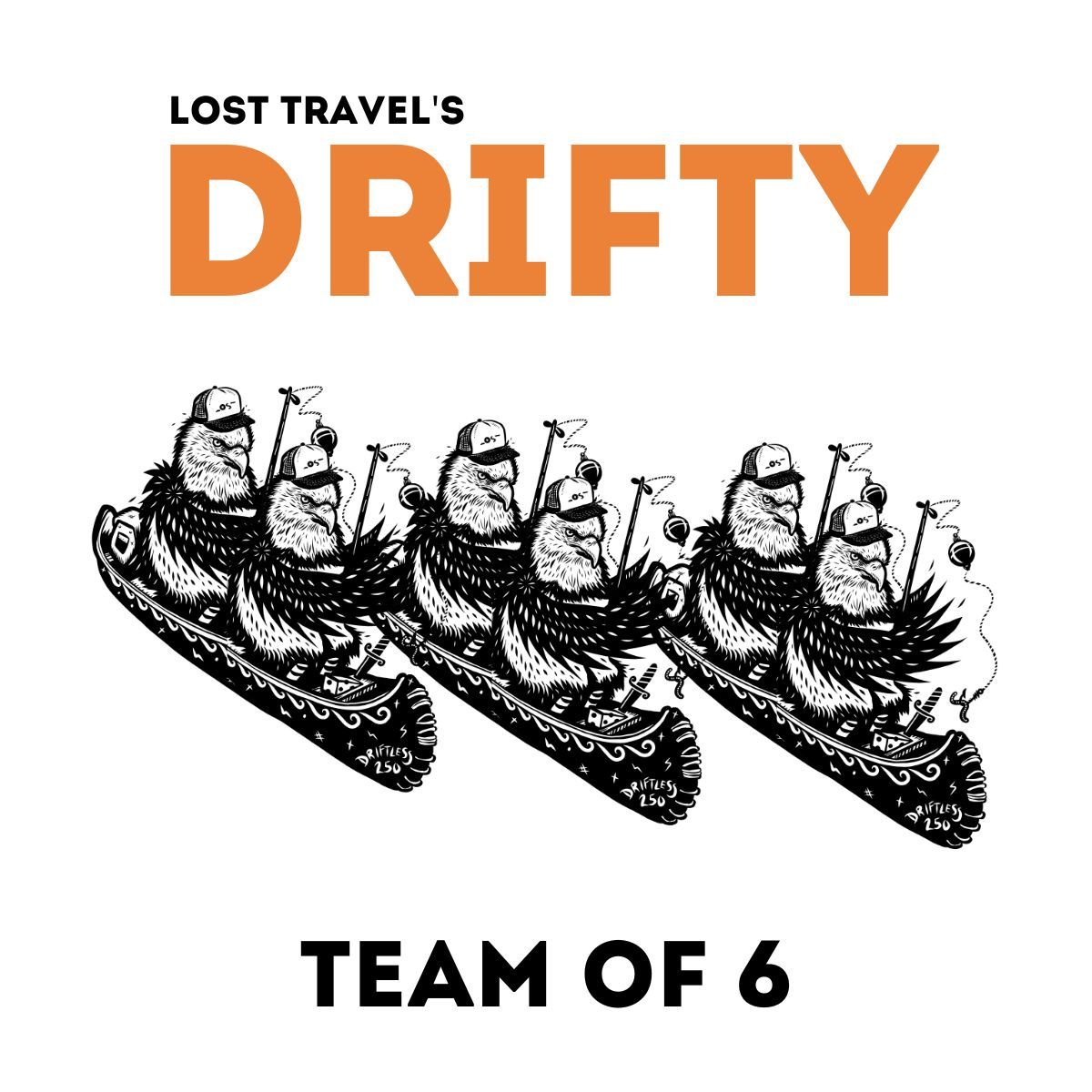The Rules
We only have three rules
-
The Drifty is not a race. There are no winners, everybody’s lost.
-
Explore and remember… you’ve got all day.
-
Absolutely no glass on the river.
The Route
The Driftless area of Wisconsin is legendary. Legend has it the Laurentide ice sheet was crushing on it so hard it decided to spare it from its destruction.
In addition to its steep and rugged landscape, it has the largest concentration of cold water streams in the world as well as an endless supply of rolling wooded hills. Oh and perhaps you’ve heard of the Wisconsin River, the longest free-flowing stretch of river in the Midwest. It’s chock full of islands and sandbars.
You’ll begin and end just a few miles from the Dane County Regional airport (MSN). After you bike to the river on Day 1 we’ll take your bike and throw a canoe at you. Once you reach the end of the river we’ll swap you back. We take care of all the boring logistic stuff.
Drifty 10
Aug 2 – Aug 10
2024
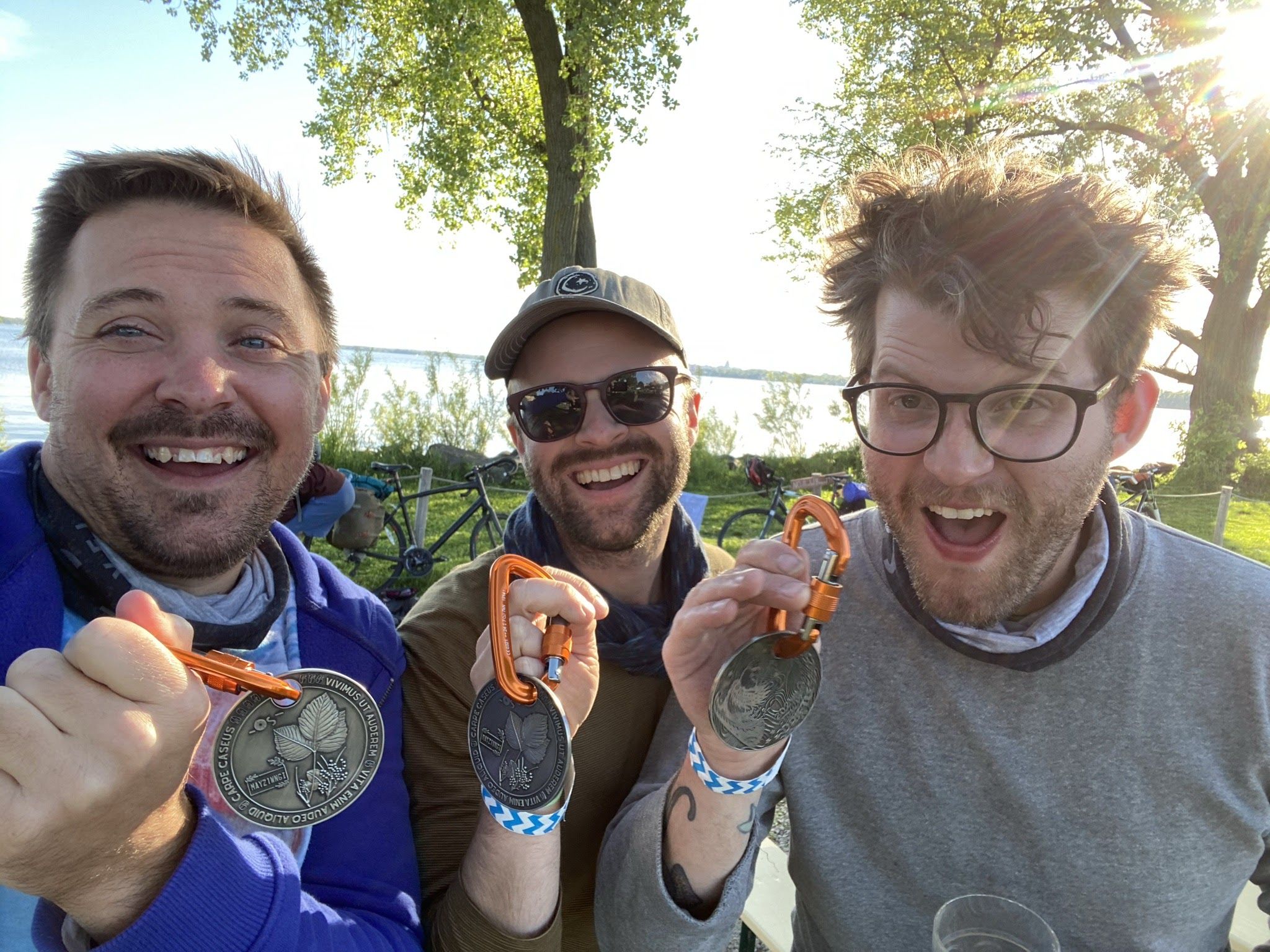
Choose your team size below to complete registration and payment. Please note we collect one payment regardless of team size.
Alert: While the Drifty is a bring-your-own-bike event, we have a partnership with a great bike shop for rentals (both standard bike or eBike). You can reserve a rental here. Lost will manage the pick up and drop off of your rental bike.
Solo $575
1 person / 1 Kayak
$575 per person
Two-Pack $999
2 people / 1 canoe
$499 per person
Four-Pack $1799
4 people / 2 canoes
$449 per person
Six-pack $2099
6 people / 3 canoes
$349 per person
WHAT’S INCLUDED
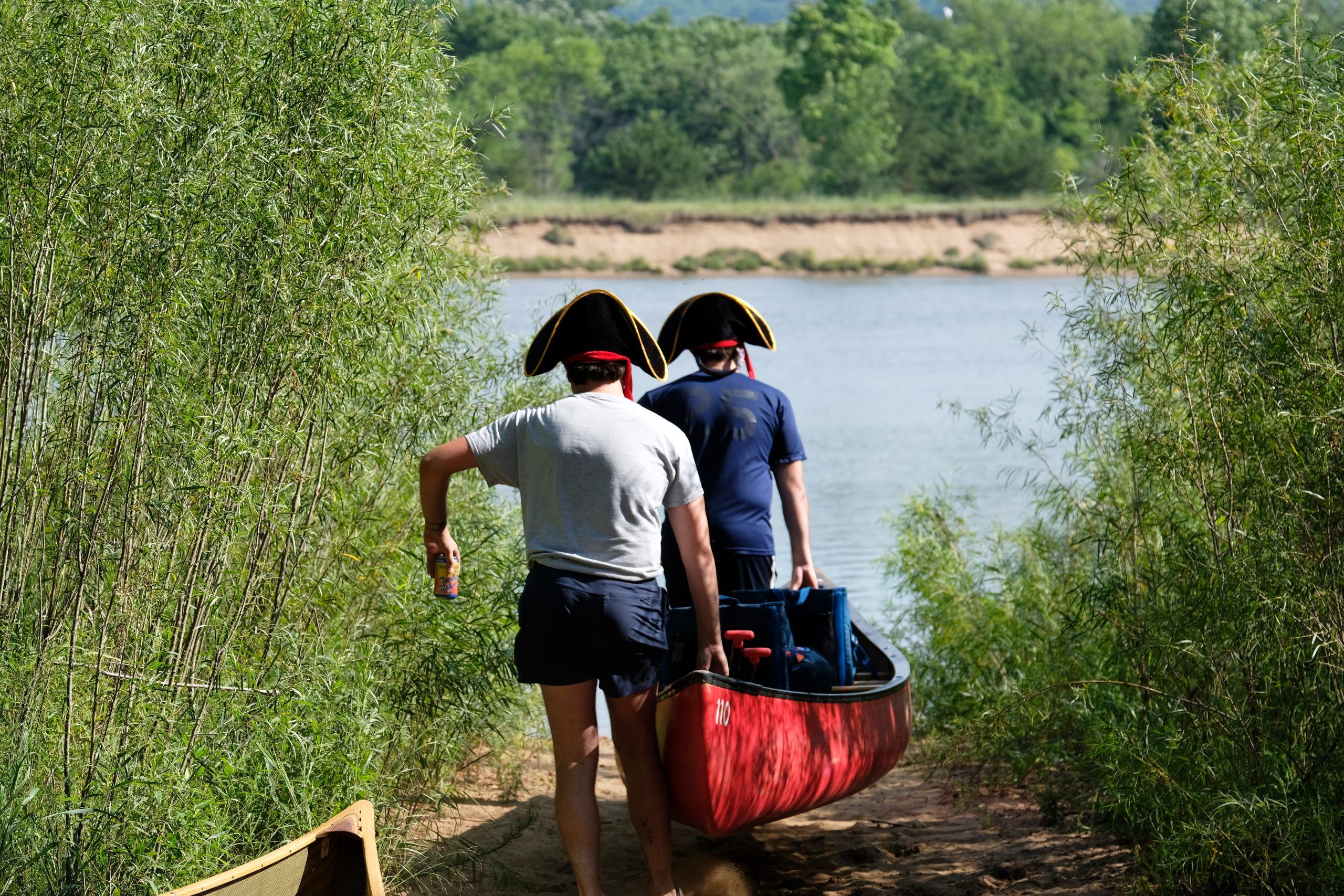
Below is everything we provide for you. You’ll notice we don’t provide you with food outside of the start and finish party. We also do not provide a bike. BYOB or let us know if you’d like help with a rental bike.
- Revered Lost Travel welcome kit
- 7 days of beautifully unscripted travel
- A start line party (food + drinks included)
- Campground accommodations for the kickoff party
- Finish line party (food + drinks included)
- Donation to River Alliance of Wisconsin
- A sea-worthy canoe for your whole team
- Paddles and life vests for your whole team
- A treasure map for you and your friends to decipher.
- At least one bald eagle sighting (we stopped counting at 20)
- Transportation and secure storage for your bike while you’re drifting down the river
- Lost gear wagon to haul all your extra shit. It will meet us at the start, meet up party, and finish line
- Bike support from the pros at Wheel & Sprocket at the start and transition
- Some firewood for the river portion
- Shiny piece of metal to commemorate it all
- Satisfaction that you’re helping preserve one of the most beautiful areas of the Midwest
- Stories your coworkers will drool over
Infrequently asked questions
If you’re flying in, book tickets to/from MSN (Dane County Regional Airport). This will put you right in the middle of the action. Madison has good public transportation and TNC options like Uber/Lyft/Greencab.
Alternatively, you can also catch a bus up from Chicago’s O’hare (ORD) or Milwaukee’s General Mitchell (MKE). You can also ride the Amtrak’s Empire Builder line from Chicago or Milwaukee.
Our best parking tip is: don’t bring your own car to Madison. Like any larger downtown parking always seems to be at a premium. Biking, flying, and taking a dodgy bus are great alternatives. However, if you do plan to drive, here are a couple options to mull over:
-
The Dutch Mill Park and Ride has free parking for extended periods.
-
The Madison Airport Parking has reasonable daily rates.
-
Check out the paid parking ramps and garages in Madison. That link also has information about street parking.
The kickoff party is held the night before the Drifty begins. At the kickoff camp you’ll mingle and scheme with other participants. You’ll have dinner and beverages provided for you. People from the Lost team will be there to run through the event and give you the basics as well as answer any questions. Accommodations are provided for you at a campground. The campground does have water and restrooms nearby. Just bring your camping gear or borrow some in the event you don’t plan on camping at all on the trip.
First off, food and beverage are provided at the kick off and finish parties, so cross those off the list. As far as the rest of the trip goes this is where you can decide what kind of adventure you want to have. Here are three made-up but realistic scenarios that Drifty participants could find themselves in.
-
You show up to the start line with no food at all. Maybe a cliff bar in your pocket and a bottle of gatorade. There are more than enough opportunities for you to purchase food from convenience stores, grocery stores, or restaurants along the way. With the exception of the first day on the river (there is a selection of stores you can stock up at before you get into the canoes) there are small cities every 10 miles or so of paddling where you can stop and grab food and water. After you transition to bikes you’ll find Wisconsin is littered with small cities with pubs/convenience stores/hotels. You’ll just have a little more stoppage time if you go this route.
-
You show up to the start line with enough food for roughly half the trip and plan to make up the difference by paddling into a restaurant or stopping at a diner or staying in a hotel a night or two. You plan to camp most nights so you’ll bring a backpacking stove to heat water or bring meals that don’t require cooking. This is probably the most popular strategy as it doesn’t require you to lug all your food around and forces you to stop and smell the fish fry every once in a while.
-
You show up to the start line with seven days of food in your pack. Whether it’s seven days of freeze-dried backpacking meals or seven days of tortillas and refried beans, you are all set with no reliance on buying any food. While others are parked up at the Days Inn for the continental breakfast you are waking up to the sunrise in your hammock in the woods.
Good news: Wisconsin has water so you don’t need to bring any with you! Seriously though, this answer is best broken up into the two segments of the trip: pedal and paddle.
For the pedal portion you’ll probably want to have capacity to hold at least 2 liters of water on you at any given time. Some people accomplish this with a couple of 1 liter water bottles while others prefer to use a Camelbak style drinking reservoir. If you have the ability to filter your water, the good news is you are pedaling through a region where roughly 1/4 of the state’s rainfall trickles through so there are a lot of streams and creeks. If you don’t plan to filter water you can always find drinking water at parks, campgrounds, bars/restaurants, and finally convenience stores via plastic bottles (least recommended).
For the paddle portion you won’t have as much freedom (compared to the bike) to jump around between establishments, but there are still opportunities to stock up. It’s a good idea to buy a couple gallons per person in the city where transition point 1 is located. This will get you through the first evening and next morning of paddling. After that, there are at least eight bridges crossing the lower Wisconsin and each generally comes with a canoe landing and small town with a convenience store or something similar. Pepper in a few riverside campgrounds and restaurants and you’ve got even more options. Again, if you are filtering water you can just make your own drinking/cooking water. Speaking of cooking water, if you are using backpacking meals you’ll want to have a little extra on hand.
Here is a nice guide compliments of the Wisconsin DNR for you.
Similar to our answer above regarding food, your nightly accommodations will be whatever you’re in the mood for. You could do the entire Driftless 250 sleeping in a nice bed with four walls and a roof around you. You could do the entire Driftless 250 gently swaying in a hammock staring at the stars. Or you could do a little blend of both. This is your adventure, not ours. Obviously camping requires very little planning (“hey that sandbar looks nice”) while hotels/BnB’s will require you to look for availability.
What we can tell you is that your first night you will be on the river as you will have given your bike to us sometime that first afternoon. The vast majority of participants spend the river portion sleeping on islands or sandbars (free) or campgrounds (paid). And once that fourth night rolls around you will have turned in your canoe for your bike. On the biking portion the world is your oyster. The Driftless region is awash with State Parks, County Parks, private campgrounds, BnB’s, and motels/hotels.
Pro-tip: Wisconsin State Parks love cyclists and will welcome you in with availability even if the campgrounds are full. It’s just the way we are.
While there are some intricacies a great rule of thumb is that sandbars and islands are all fair game. They are free to camp on (3 night max) and they only ask in return that you leave no trace. The shoreline of the lower Wisconsin is a mixture of public and private land. We do not recommend camping on the shoreline, only because it’s not always clear what is public and what is private. There are plenty of islands and sandbars, trust us. The river is also peppered with public and private campgrounds, some with facilities like showers and water. We can help locate these for you.
Not directly but if you find yourself needing turndown service and an ice machine you can find accommodations at several of the cities along the way. In our experience they generally don’t let you bring your canoe in the room with you so you’ll need to plan ahead on how you keep your vessel safe and secure.
We suggest doing as the deer do and embracing the elements. Find a place where there is some vegetative shelter and soil mixed with the sand. Simply dig a hole 6 inches deep to bury your waste. Deeper is not better since it inhibits the bacteria that break down the waste. Shallower depths increase the chance it will be exposed by wind or high water. Lastly, provide a paper sack for used toilet paper and feminine hygiene products. Either pack the sack out or burn it right before you douse your campfire.
If that’s not your thing, by the end of the week you’ll be an expert on the bathrooms of southern Wisconsin’s gas stations and breweries.
Nothing fancy, seriously. Participants have run the gamut on this one. We see a lot of hybrids. A lot of road bikes, some new, some really old. We’ve seen mountain bikes. We’ve seen tandem bikes. We haven’t seen a unicycle yet, but there is a guy signed up with a skateboard. Also, this is a Bring Your Own Bike (BYOB) adventure but please let us know if you need a rental, we know some people.
This party is BYOBike and we’re equal opportunity adventurers. If it’s human powered or electric powered, you can bring that bad chicken to the start line with you. Leave the gas powered cycles at home for this one.
You’re probably getting sick of hearing these words: it’s up to you. You’d probably be best to fire up YouTube and search “bikepacking” for ideas. We’ve seen everything. Panniers are popular. Bike bags like frame bags, seat post bags, and handlebar bags are popular. You can transport everything on your back in a backpack as well. We’ve also seen repurposed bird seed containers. Bike trailers are fair game but riders often say they are heavy and generally wouldn’t use them again. In general, we see total pack capacity in the ballpark of 40-45 liters. This totally depends on whether you are camping and if you are on team hammock or team tent. Lastly, the Lost gear wagon will be available to haul all your extra shit. It will meet us at the start, meet up party, and finish line
At the first transition point on day one you’ll give us your bike and we’ll give you a mostly seaworthy kayak or canoe. Later in the week at transition two you’ll give us your floaty thing back and we’ll give you your bike.
– From Madison to Sauk City (on bike) you’ll have to carry all your things.
– From Sauk City to Wyalusing (while you’re on the water) the Lost Wagon will carry your bike and whatever you stick on it, to Wyalusing.
– From Wyalusing back to Madison (on bike) you’ll have to carry all your things again.
The ”carry all your things on the bike” section is part of the challenge. It also prevents people from bringing their 14 piece china set for a feast on the river.
This one is on you. You would do yourself a favor if you carried a patch kit or a spare tube. A simple bike tool set and some duct tape goes a long way. In the event you are in a real pinch you’re never too far away for a ride in a pick up truck to the next bike shop.
We truly believe this is more of a “will” versus “skill” event. We’ve seen people of all ages and physical abilities successfully do the Drifty. Generally the crowd is made up of average or below average cyclists because the biking portion is pretty crushable by a skilled cyclist. And we’ve purposely built in a bit of a cushion on the biking portion to allow you to explore the area. Skilled cyclists will just get more exploring in. You are not disqualified if you have to walk up a hill or find yourself in a situation where you’re loading your bike into someone’s truck in order to get to the finish line on time.
The paddling portion is all “downhill” with the river current, unless you’ve done something terribly wrong. We’d like to hear that story. You could ballpark that the canoes will move around 3.5-4 mph on the river with light paddling. A little slower if you just float, a little faster with moderate paddling. Kayaks will do a bit faster than the canoes as well, but with less room for beer.
Again we want to remind you the Drifty is not a race nor a physical endurance competition. But it’s also not a cakewalk. If it was easy everyone would do it. You’ll be amongst rarified air if you do a through-paddle of the legendary Lower Wisconsin River.
Yes, your paddling terminus is somewhere a few miles down the Mississippi after you take your offramp from the Wisconsin River. This is where the first European explorers first discovered the mighty Mississippi. You’ll see Iowa’s Pikes Peak State Park atop the bluffs on river-right and the bluffs of Wyalusing State Park on river-left. This section of the Mississippi River on a Wednesday is pretty dead. In general the area is serviced more by rail than by river barges. You’ve nothing to fear but fear itself here.
